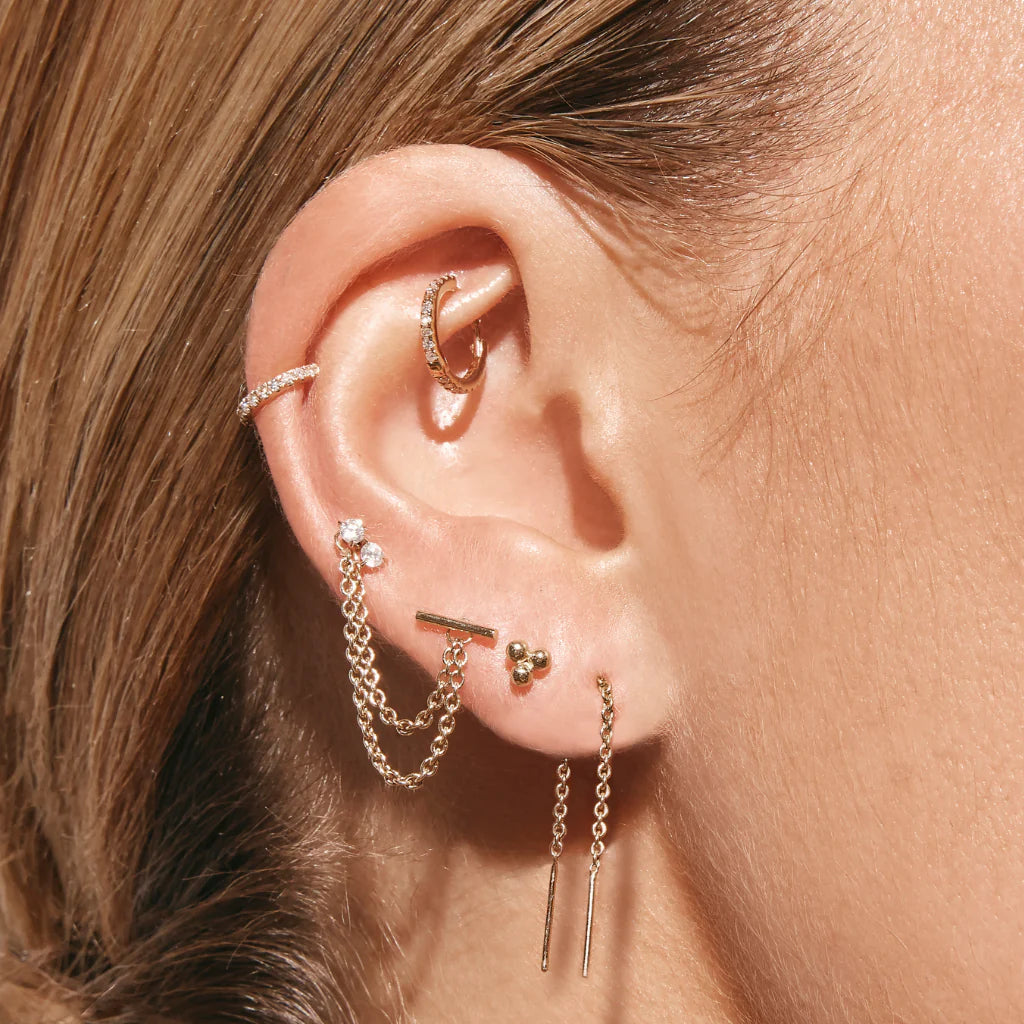Ear piercing is a popular form of body art and cultural expression that has been practiced for centuries. In Dubai, where fashion and aesthetics are highly valued, ear piercing has gained immense popularity among people of all ages. However, ensuring that ear piercing is done safely and hygienically is crucial to avoid complications such as infections or scarring. This article delves into the safety standards of Ear Piercing in Dubai, highlighting what to look for when selecting a piercing studio and the regulations in place to safeguard your health.
Understanding Ear Piercing Regulations in Dubai
Dubai, as part of the UAE, has stringent health and safety regulations that govern beauty services, including ear piercing. The Dubai Health Authority (DHA) oversees these regulations, ensuring that all beauty establishments comply with hygiene, sterilization, and safety protocols to prevent infections and injuries.
Key regulations include:
- Licensing and Certification: Piercing studios must be licensed by the DHA. This ensures that the studio follows the required hygiene practices and that piercers are trained professionals who understand proper piercing techniques and aftercare.
- Sterilization Standards: All equipment used for piercing, including needles and clamps, must be sterilized to prevent contamination. Autoclaves are typically used for this purpose, ensuring that all tools are completely free of bacteria and other pathogens.
- Single-Use Equipment: Licensed piercing studios in Dubai are required to use single-use needles for each customer. This minimizes the risk of cross-contamination and infection. Jewelry used for initial piercings should also be sterilized.
- Hygienic Environment: Piercing studios must maintain a clean and sanitary environment. This includes regularly disinfecting surfaces, floors, and furniture, and having proper waste disposal systems in place.
What to Look for in a Piercing Studio
When considering getting your ears pierced in Dubai, choosing a reputable studio is key to ensuring your safety and comfort. Here are some essential factors to consider:
1. Professional Expertise
Ensure that the piercer is experienced and well-trained. A certified professional will know how to perform the piercing quickly and precisely, minimizing pain and ensuring correct placement. They should also be able to guide you on aftercare to prevent complications.
2. Sterilization and Cleanliness
A clean studio is essential for a safe piercing experience. Look for a studio that visibly adheres to hygiene standards. The piercer should wear disposable gloves, use sterilized tools, and open sealed, single-use needles in front of you. If the studio feels unclean or disorganized, it’s best to go elsewhere.
3. Type of Equipment Used
Studios that use piercing guns should be avoided, as these can cause tissue damage and increase the risk of infection. Instead, opt for studios that use needles, which are more precise and safer for the delicate skin of the ear. Needle piercings heal faster and are less likely to result in complications.
4. Aftercare Guidelines
A professional piercer will provide you with detailed aftercare instructions. These guidelines are crucial for preventing infections, irritation, or the development of keloids. Ensure that the piercer gives you clear instructions on cleaning the piercing and avoiding activities that could harm the healing process.
Safety Concerns with Ear Piercing
While ear piercing is generally safe when performed by a professional, there are risks if safety standards are not met. The most common risks include:
1. Infection
An infection can occur if proper hygiene and sterilization protocols are not followed. Symptoms include redness, swelling, pain, and discharge from the pierced area. In severe cases, infections can lead to abscesses or other complications that may require medical intervention.
2. Allergic Reactions
Certain metals used in jewelry, such as nickel, can cause allergic reactions in some individuals. To avoid this, ensure that the studio uses hypoallergenic materials like surgical steel, titanium, or 14K gold for your initial piercing.
3. Keloids
Keloids, or raised scars, can form around the piercing site if the skin is prone to scarring. While keloids are rare, it’s important to follow aftercare instructions carefully to minimize the risk.
4. Improper Placement
Incorrect placement of the piercing can lead to discomfort, difficulty healing, or the piercing growing out over time. This is why it’s essential to choose a skilled and experienced piercer who understands proper positioning based on the shape and structure of your ear.
Legal Aspects of Ear Piercing in Dubai
In addition to hygiene and sterilization standards, Dubai has specific legal requirements for ear piercing:
1. Age Restrictions
Minors must have parental consent to get their ears pierced. The legal age for piercing without parental consent is typically 18 years old. However, some studios may set their own age limits, so it’s important to inquire beforehand.
2. Medical Conditions
Certain medical conditions, such as diabetes or autoimmune disorders, may affect healing. It’s important to disclose any relevant health conditions to the piercer before undergoing the procedure. Some studios may require a doctor’s note if you have any health concerns.
Conclusion
Ear piercing in Dubai can be a safe and enjoyable experience if done by a licensed and reputable studio. By ensuring that the studio follows the necessary safety standards, such as sterilization of tools, single-use needles, and proper aftercare guidelines, you can significantly reduce the risk of complications. Always choose a professional piercer who adheres to Dubai’s strict regulations to ensure a hygienic and safe procedure.





Comments